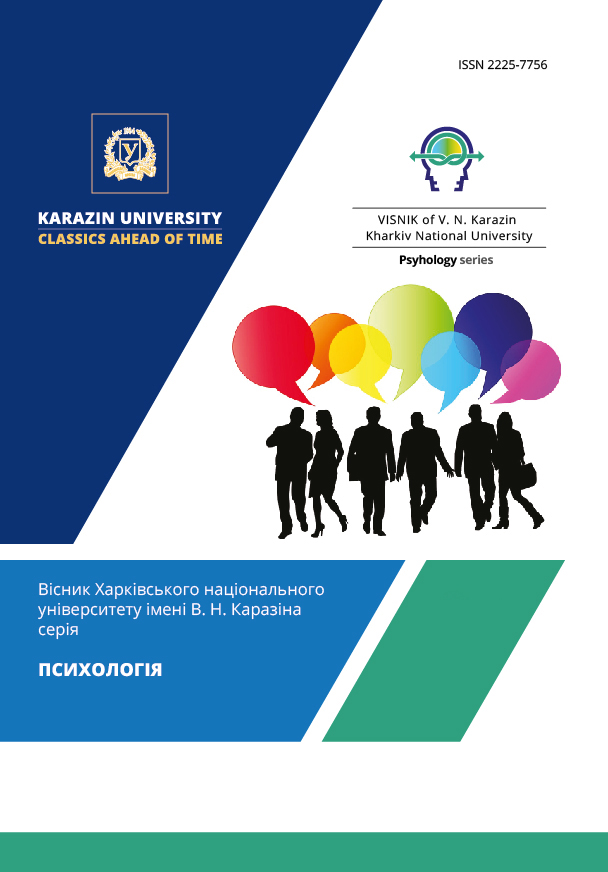REFLECTION ON COLLECTIVE MEMORY IN THE MUSEUM
Keywords:
museum, Holocaust, visitors, comments, discourse
Abstract
The article describes visitors’ interpretation and understanding of the narrative about the Holocaust in the United States Holocaust Memorial Museum. Visitors comments were the material for the analysis, used methodology was discourse analysis. Different discourses were singled out in visitors’ comments. Differences between visitors’ comments given in different years were ascertained. Age differences and differences among narratives of various groups of the Museum visitors were shown. It can be concluded that the Museum fulfills various functions. Besides being a place of commemoration, it accomplishes its educational function and serves as a source of information about the Holocaust.
Downloads
Download data is not yet available.
References
Akkent M. & Kovar N. (Eds.). (2019). Feminist pedagogy: museums, memory sites, practices of remembrance. Istanbul: Istos Publishing House.
Apfel R.J. & Simon B. (1996). Minefields in their hearts: The mental health of children in war and communal violence. New Haven, CT: Yale University Press.
Bar-On D. (1995). Fear and hope: Three generations of the Holocaust. Cambridge, MA: Harvard University Press.
Black G. (2011). Museums, Memory and History. Cultural and Social history. 8(3), 415-427. DOI: 10.2752/147800411X13026260433275
Blakkisrud H. & Kuziev F. (2019). Museums, memory and meaning creation: (re)constructing the Tajik nation. Nations and Nationalism. 25 (3), 997-1017. DOI: https://doi.org/10.1111/nana.12519
Bozoglu G. (2019). Museums, Emotion, and Memory Culture: The Politics of the Past in Turkey. London and New York: Routledge.
Gee J. P. (2014). An introduction to discourse analysis. London and New York: Routledge.
Levy D. & Sznaider N. (2002). Memory Unbound. The Holocaust and the Formation of Cosmopolitan Memory. European Journal of Social Theory. 5(1), 87-106. DOI: https://doi.org/10.1177/1368431002005001002
Lloyd C. (2015). Memories of Slavery: Museums, Monuments, Novels in C. Lloyd (Ed.). Rooting memory, rooting place, pp 19-51. New York: Palgrave Macmillan. DOI: https://doi.org/10.1057/9781137499882
Reisigl M. & Wodak R. (2001). Discourse and Discrimination. Rhetorics of Racism and Antisemitism. London and New York: Routledge. DOI: https://doi.org/10.4324/9780203993712
Robinson H. (2012). Remembering things differently: museums, libraries and archives as memory institutions and the implications for convergence. Museum Management and Curatorship. 27(4), 413-429. DOI: https://doi.org/10.1080/09647775.2012.720188
Sodaro A. (2018). Exhibiting atrocity: Memorial Museums and the Politics of Past Violence. New Jersey, and London: Rutgers University Press. DOI: 10.2307/j.ctt1v2xskk
Apfel R.J. & Simon B. (1996). Minefields in their hearts: The mental health of children in war and communal violence. New Haven, CT: Yale University Press.
Bar-On D. (1995). Fear and hope: Three generations of the Holocaust. Cambridge, MA: Harvard University Press.
Black G. (2011). Museums, Memory and History. Cultural and Social history. 8(3), 415-427. DOI: 10.2752/147800411X13026260433275
Blakkisrud H. & Kuziev F. (2019). Museums, memory and meaning creation: (re)constructing the Tajik nation. Nations and Nationalism. 25 (3), 997-1017. DOI: https://doi.org/10.1111/nana.12519
Bozoglu G. (2019). Museums, Emotion, and Memory Culture: The Politics of the Past in Turkey. London and New York: Routledge.
Gee J. P. (2014). An introduction to discourse analysis. London and New York: Routledge.
Levy D. & Sznaider N. (2002). Memory Unbound. The Holocaust and the Formation of Cosmopolitan Memory. European Journal of Social Theory. 5(1), 87-106. DOI: https://doi.org/10.1177/1368431002005001002
Lloyd C. (2015). Memories of Slavery: Museums, Monuments, Novels in C. Lloyd (Ed.). Rooting memory, rooting place, pp 19-51. New York: Palgrave Macmillan. DOI: https://doi.org/10.1057/9781137499882
Reisigl M. & Wodak R. (2001). Discourse and Discrimination. Rhetorics of Racism and Antisemitism. London and New York: Routledge. DOI: https://doi.org/10.4324/9780203993712
Robinson H. (2012). Remembering things differently: museums, libraries and archives as memory institutions and the implications for convergence. Museum Management and Curatorship. 27(4), 413-429. DOI: https://doi.org/10.1080/09647775.2012.720188
Sodaro A. (2018). Exhibiting atrocity: Memorial Museums and the Politics of Past Violence. New Jersey, and London: Rutgers University Press. DOI: 10.2307/j.ctt1v2xskk
Published
2020-11-18
Cited
How to Cite
Іванова, О. Ф. (2020). REFLECTION ON COLLECTIVE MEMORY IN THE MUSEUM. Visnyk of V.N. Karazin Kharkiv National University. Series Psychology, (68), 37-42. https://doi.org/10.26565/2225-7756-2020-68-05




